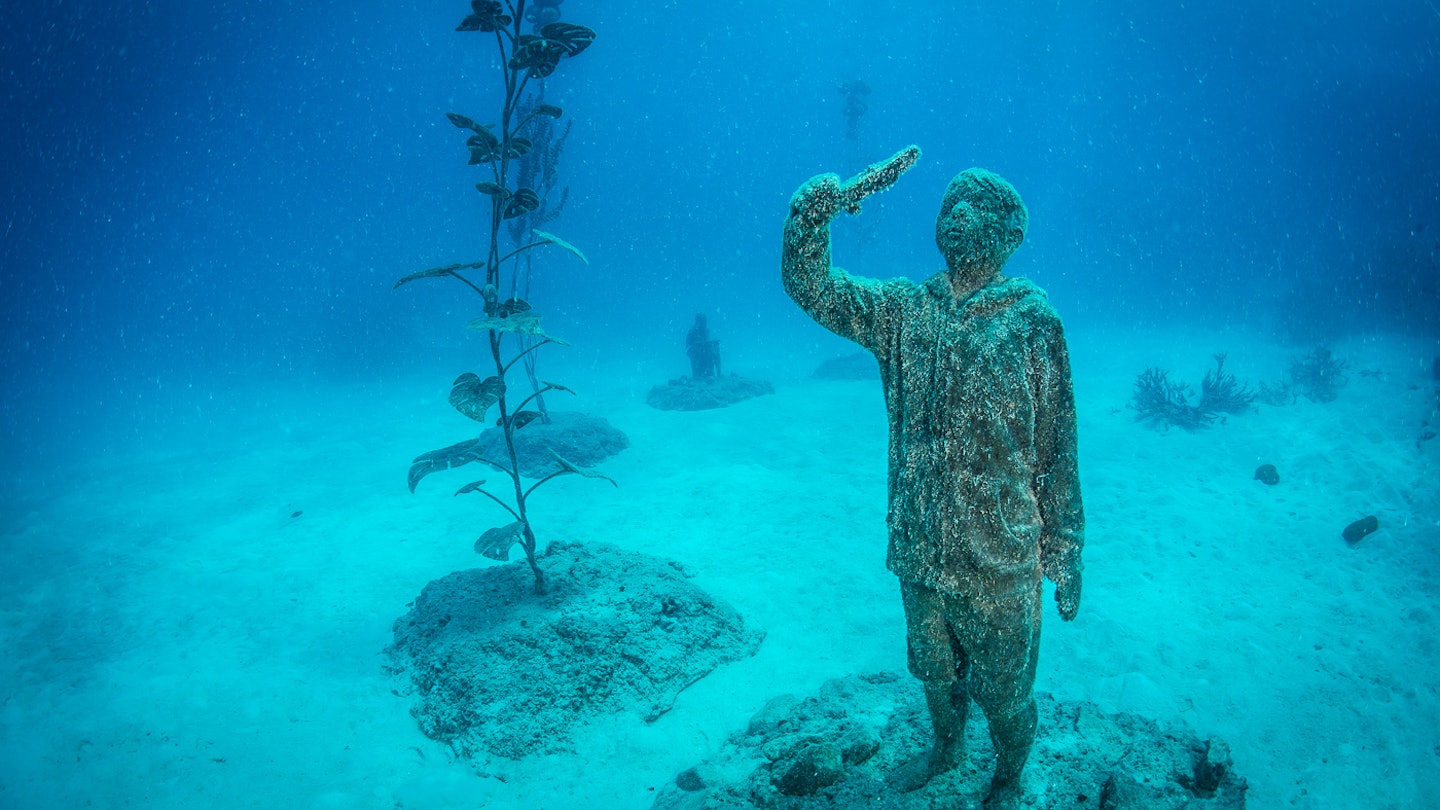
The 30 best countries, cities and regions to visit in 2025

Nov 22, 2020 • 4 min read

There's lots to explore © MOUA/Matt Curnock
From Mexico to Marseille, underwater museums are taking immersive art experiences to a whole new level. Sarah Reid heads to Australia’s Great Barrier Reef to explore one of the world’s newest aquatic galleries.
There’s something a little unnerving about sinking into the aquamarine abyss towards a large, dark shadow. For a moment I imagine it’s the skeletal remains of a dinosaur, its 65-million-year-old stomping ground long since reclaimed by the sea. But the figure quickly transforms into an even more surreal submarine setting.

Located in a sheltered lagoon on John Brewer Reef, a largely untouched corner of the Great Barrier Reef near Townsville, the Coral Greenhouse is the second and largest instalment of northern Queensland’s new Museum on Underwater Art (MOUA). Completed in April and opened to divers in August, the A-frame greenhouse has already attracted a plethora of marine life. Swimming in through a side entrance, I spot a colorful parrotfish gnawing at an algal growth on one of eight human figures inside the 72-square-meter structure. On my way out the opposite doorway, I pass a large batfish resting in a sheltered nook between two steel beams. Local marine scientist Dr Adam Smith, who has played a key role in bringing MOUA to life, tells me they’re just two of more than 50 marine species that have been identified at the Coral Greenhouse since its installation, from teeny invertebrates to a school of barracuda that have taken up residence here.
Designed by renowned British sculptor Jason deCaires Taylor in collaboration with the Wulgurukaba people, the region’s Traditional Owners, MOUA isn’t just a thrilling new way to experience the Great Barrier Reef, but also a unique opportunity to learn about the challenges it faces. Reflecting the Aboriginal tradition of caring for Country (ancestral lands), the greenhouse’s human sculptures can be seen undertaking various conservation activities, highlighting the importance of protecting the world’s largest living organism.

While it’s easy to spend your whole dive observing this futuristic underwater garden, which features an additional 25 sculptures – from eucalyptus trees to gardeners – anchored to the sandy ocean floor, visitors are also welcome to explore the reef that cradles it. With plenty of air left in our tanks, my dive buddy and I follow a white-tipped reef shark along an exquisite coral wall. Despite recent reports that the 2300km-long reef has now lost half its coral, you wouldn’t know it here. I head back to the reef during my second dive, where I spy everything from a moray eel to an enormous wobbegong shark hanging out among the mushroom-like plate corals and scarlet sea fans. An array of Technicolor nudibranchs (sea slugs) and feisty anemone fish compliment the vibrant display.
Get ready to stay in the first underwater rooms on the Great Barrier Reef
Sitting at a depth of 12-18m, the Coral Greenhouse is suitable for Open Water-certified divers and above, but Discover Scuba Divers can also explore it from a maximum depth of 12m. And the fun isn’t reserved for divers. In good visibility, snorkellers and freedivers can also get a good look at the museum, as well as enjoy the shallow reef. Taking a final pass through the greenhouse before the 74km trip back to Townsville with Adrenalin Snorkel and Dive, I wonder what may bloom from the flowerpot resting in the lap of a female sculpture. With the pH-neutral structures designed to inspire coral growth, I can’t wait to come back to find out.

With wild weather thwarting my attempt to dive the SS Yongala, widely considered to be Australia’s best wreck dive, it’s not the only reason I’ll be making a return visit to Townsville. But soon there’ll be even more draws for the dive crowd, with the third instalment of MOUA expected to be completed at nearby Palm Island in 2021, followed by the final gallery at Magnetic Island, just a 45-minute ferry ride from the city. Smith is also hoping to launch a coral planting programme, which will allow MOUA visitors to play an active role in reef conservation.
Archaeologists uncover 7000-year-old Aboriginal artefacts underwater
Later that evening, I take a stroll along Townsville’s scenic waterfront to check out Ocean Siren – MOUA’s inaugural sculpture that rises out of the ocean alongside the Strand Jetty. Changing hue in response to live variations in the water temperature, the solar-illuminated female form modelled on young Wulgurukaba woman Takoda Johnson is a poignant warning. Yet her youth is also a powerful symbol of how her generation will help to shape the Great Barrier Reef’s future.
Norway’s new waterfront park will have an underwater diving trail
A diamond ring is among ten new sculptures added to an underwater museum in Florida
Explore ancient shipwrecks in Greece's first underwater museum
Plan with a local
